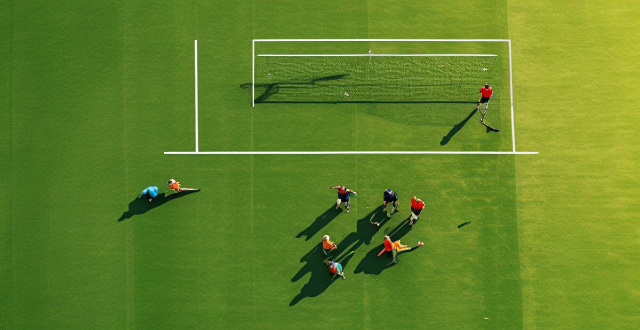Technology has significantly impacted sports performance through improved equipment, advanced analytics, and enhanced training methods. Lightweight materials, aerodynamic designs, and customized gear have boosted athlete performance. Safety measures and recovery tools have minimized injuries and accelerated healing. Smart devices and simulation tools aid efficient training. Advanced analytics aid in performance tracking, strategy development, and team management. However, these advancements may create disparities between teams with unequal access to technology. They also raise debates on skill versus technology's role in sports. Despite concerns, technology enhances fan engagement through interactive experiences and data visualization. As technology advances, governing bodies must ensure equitable access and maintain fair competition while embracing its role in shaping the future of sports.

The Impact of Technological Advancements on Sports Performance
Introduction
Technology has revolutionized the way sports are played, watched, and analyzed. From improved equipment to advanced analytics, technological advancements have significantly influenced sports performance at the highest level. This essay will explore the extent to which these advancements have impacted sports performance and discuss their implications.
Improved Equipment
1. Enhanced Performance
- Lightweight Materials: Athletes can perform better with lighter gear, such as carbon fiber poles in track and field events or lightweight racing bikes in cycling.
- Aerodynamic Designs: In sports like swimming and cycling, aerodynamic suits and helmets reduce drag, allowing athletes to move faster through water or air.
- Advanced Footwear: Shoes with better traction and cushioning improve an athlete's grip and comfort during competition.
- Customized Equipment: Personalized gear, like specially designed prosthetic legs for runners, optimize individual performance.
2. Safety and Injury Prevention
- Protective Gear: Helmets, pads, and other protective equipment have evolved to minimize injuries in contact sports.
- Innovative Designs: Technology has led to safer designs, such as softer hockey sticks that reduce the risk of injury.
- Recovery Tools: Recovery boots and massage guns speed up muscle recovery after intense training sessions.
3. Training Efficiency
- Smart Devices: Wearable tech tracks an athlete's heart rate, calories burned, and more during training.
- Simulation Tools: Virtual reality systems simulate game scenarios for players to practice decision-making skills.
- Strength Training: Advanced weight machines and resistance bands offer targeted workouts to enhance specific muscle groups.
Advanced Analytics
1. Performance Tracking
- Biometric Data: Sensors capture data on an athlete's movements, helping coaches fine-tune techniques.
- Video Analysis: Slow-motion replays reveal nuances in an athlete's form that can be corrected.
- Physical Assessments: Tests like VO2 max evaluate an athlete's endurance capacity.
2. Strategy Development
- Opponent Analysis: Studying opponents' tendencies using video analysis can inform strategic decisions.
- Game Planning: Data-driven insights help teams develop effective strategies tailored to upcoming opponents.
- Play Optimization: Analyzing past performances reveals what plays are most successful under certain conditions.
3. Team Management
- Player Rotation: Analytics assist coaches in deciding when to substitute players based on performance metrics.
- Injury Prevention: By monitoring load and fatigue levels, teams can manage player workloads to avoid burnout.
- Nutrition Planning: Tailored diets based on each athlete's physiological needs optimize energy levels.
Implications of Technological Advancements
1. Leveling the Playing Field
- Accessibility: Not all teams have equal access to cutting-edge technology, potentially creating disparities between wealthy and less wealthy organizations.
- Rule Changes: Some technologies may lead to rule changes if they provide an unfair advantage or change the nature of the sport.
- Skill Versus Technology Debate: There is ongoing discussion about whether technology should play a dominant role in sports where human skill and effort are traditionally valued.
2. Fan Engagement
- Interactive Experiences: Fans can engage with games more deeply through augmented reality overlays and interactive stadium features.
- Data Visualization: Comprehensive statistics and real-time analytics enhance viewership experiences for those who enjoy detailed information.
- Virtual Attendance: With virtual reality technology, fans can experience games remotely as if they were present at the event.
Conclusion
Technological advancements have undeniably influenced sports performance at the highest level by improving equipment, enabling sophisticated analytics, and enhancing training methods. However, it is crucial for governing bodies to ensure equitable access to technology and maintain the integrity of competition. As technology continues to evolve, its role in shaping the future of sports will undoubtedly remain significant but must be balanced with preserving the essence of fair competition and human achievement.